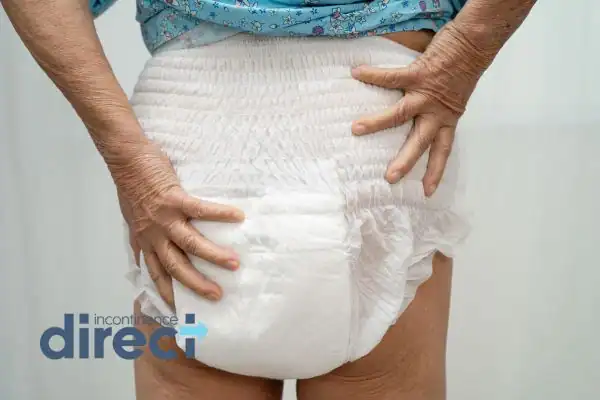How the EMS Chair is Revolutionising Faecal Incontinence Treatment Plymouth

Is faecal incontinence ruining your life? Do you avoid social situations, maybe even missing holidays, because of fear of embarrassment?
Faecal incontinence Plymouth can significantly impact our lives, leading to emotional distress, skin irritation, and social isolation and affecting our overall quality of life.
Please speak to our team today for a non-surgical faecal incontinence treatment Plymouth solution. Even possible in the comfort of your home!
Reclaim your life and independence today!
Faecal incontinence Plymouth (FI) is a condition that profoundly affects quality of life, often causing embarrassment, isolation, and emotional distress.
Thanks to advancements in medical technology, the EMS Chair is emerging as a game-changing solution—offering a non-invasive, effective, and accessible treatment.
| Treatment | Invasiveness | Typical Course | Evidence for FI | Key Benefits | Considerations / Limitations | Best For |
|---|---|---|---|---|---|---|
| The Ems Chair (HIFEM pelvic floor stimulation) | Non-invasive; fully clothed, clinic chair sessions | ~6 sessions over ~3 weeks; each ~28–30 min; periodic maintenance possible | Emerging/early clinical evidence (ongoing trials for FI; extracorporeal magnetic stimulation studies suggest benefit) | Targets pelvic floor & anal sphincter via thousands of supramaximal contractions; no anaesthesia or downtime; improves pelvic floor awareness and QoL for many | Availability varies; individual response differs; may need booster sessions; stronger evidence base exists for urinary incontinence than FI | Mild–moderate FI linked to pelvic floor weakness; patients preferring non-surgical options |
| Pelvic Floor Physiotherapy (PFPT) ± Biofeedback | Non-invasive, therapist-guided exercises/training | Weekly sessions for weeks–months plus home programme | Supported by guidelines; biofeedback can reduce FI days and severity vs PFPT alone in some studies | Foundational therapy; improves sphincter control and coordination; no device or surgery | Requires adherence & access to trained therapists; improvements may be gradual | First-line for most FI, especially with pelvic floor dysfunction |
| Diet/Medications (e.g., fibre, antidiarrheals, laxatives) | Non-invasive | Ongoing daily management, titrated to symptoms | Widely recommended as part of conservative care; symptom-modulating rather than curative | Adjusts stool form/urgency; easy to start; complements other therapies | Does not strengthen pelvic floor; potential GI side effects; variable efficacy | Patients with diarrhoea-predominant symptoms or irregular stool consistency |
| Injectable Anal Bulking Agents | Minimally invasive (clinic/procedural) | One or more outpatient injections; may require repeat over time | Evidence for short- to mid-term symptom improvement in selected patients | Quick procedure; can decrease leakage by augmenting anal canal closure | Effects may diminish; injection-related risks; not effective for all causes | Mild–moderate FI without major sphincter defects; when conservative therapy insufficient |
| Tibial Nerve Stimulation (PTNS) | Minimally invasive (percutaneous needle at ankle) or surface electrodes | Weekly sessions for ~12 weeks; maintenance as needed | Some supportive evidence; less robust than sacral stimulation | Outpatient; no implant; modulates anorectal reflex pathways | Time-intensive; variable response; requires maintenance | Patients seeking neuromodulation without surgery |
| Sacral Nerve Stimulation (SNS) | Surgical (implantable pulse generator and lead) | Trial stimulation followed by permanent implant if responsive; long-term follow-up | Strong evidence for sustained benefit in appropriately selected patients | High long-term effectiveness; programmable; improves QoL | Requires surgery, device maintenance/revision; not suitable for all; cost considerations | Moderate–severe FI refractory to conservative measures |
| Sphincteroplasty / Corrective Surgery | Surgical | Single operation with recovery period; outcomes followed over years | Evidence supports benefit in structural sphincter defects, but durability can decline over time | Addresses anatomical defects directly | Operative risks; recovery time; variable long-term success | Patients with defined sphincter tears/defects |
| Note: Treatment choice should be individualised after specialist assessment. Ems Chair’s evidence base for urinary incontinence is well established; for faecal incontinence the data are emerging and include ongoing clinical trials and studies of extracorporeal magnetic stimulation. | ||||||
How To Treat Faecal Incontinence Plymouth – What Is the EMS Chair?
The EMS Chair is a medical device that uses High-Intensity Focused Electromagnetic (HIFEM) technology to stimulate and tone pelvic floor muscles—including the anal sphincter—through thousands of rapid supramaximal contractions during a single session. Treatments are painless, do not require disrobing, and typically last under 30 minutes.
Revolutionary Features for Faecal Incontinence Plymouth

1. Non-Invasive with No Downtime
Patients remain fully clothed throughout each session and can resume normal activities immediately afterwards.
2. Remarkable Muscle Stimulation
One session can deliver the equivalent of over 11,000 Kegel exercises. Rebuilding muscular strength and function that exercises alone may not achieve.
3. Clinically Validated & Safe
The EMS Chair is FDA-cleared for treating both urinary and faecal incontinence, embracing safety and credibility in one treatment..
4. Rapid Results, Sustainable Outcomes
Some patients experience improvement after just one session, with optimal effects typically achieved after a series of six treatments. Maintenance sessions, as needed, help sustain results over time.
s Against Traditional Treatments
Traditional options like surgery, injectable agents, sacral nerve stimulators, and bulking agents can be invasive, costly, and not suitable for all patients. The EMS Chair offers a compelling non-invasive alternative. With minimal risk and ease of use, it makes it particularly appealing for those seeking accessible options.
Ideal Candidates For Faecal Incontinence Treatment Plymouth
The EMS Chair suits individuals experiencing:
- Faecal incontinence due to weakened pelvic muscles
- Mild to moderate pelvic floor dysfunction
- A desire to avoid surgical or pharmacological therapies.
Patients with metal implants, electronic implants, pregnancy, or certain medical conditions may not be suitable candidates.
Conclusion
The EMS Chair marks a revolutionary step forward in faecal incontinence therapy—combining technology-driven efficacy, comfort, speed, and accessibility. Its non-invasive nature, fast results, and minimal recovery make it a viable option in the continuum of pelvic health treatments. While patient responses vary, many have reported life-altering improvements.
As awareness grows and research evolves, the EMS Chair could redefine standard care for faecal incontinence Plymouth—bringing freedom, confidence, and control back to those affected.
Frequently Asked Questions Faecal Incontinence Treatment Plymouth
1. What is faecal incontinence?
Faecal incontinence (also called bowel incontinence) is the involuntary loss of stool or leakage of liquid or solid faeces when you don’t want it to happen.
2. What causes faecal incontinence?
There are multiple causes, including:
- Muscle or nerve damage in the pelvic floor, rectum or anal sphincter (for example, due to childbirth, surgery or injury).
- Loose or watery stool (diarrhoea) or, conversely, very hard stool or chronic constipation, which can both lead to leakage.
- Conditions that affect nerve control of bowel movements (such as neurological disease) or structural problems (e.g., rectal prolapse).
3. How is faecal incontinence diagnosed?
Diagnosis usually begins with a discussion of symptoms and your medical history, followed by a physical examination (including a possible rectal exam). It may be followed by tests such as anorectal manometry, ultrasound, or imaging to assess muscle and nerve function.
4. What treatment options are available?
Treatment depends on the cause and severity:
- Dietary and lifestyle changes (e.g., managing stool consistency, avoiding irritants).
- Pelvic-floor muscle exercises and biofeedback therapy to strengthen muscles and improve nerve control.
- Medications or agents to control diarrhoea, constipation or loose stool.
- If other treatments are not sufficient, specialist treatments such as nerve-stimulation therapy or surgery may be considered.
5. Can faecal incontinence be cured?
While a complete “cure” is not always guaranteed, many people achieve significant improvement in symptoms and quality of life.
6. What can I do myself to help manage the condition?
Some self-help steps include:
- Keeping a symptoms diary (noting diet, fluid intake, stool pattern).
- Avoiding or limiting foods/drinks that trigger loose stool or urgency (e.g., very spicy foods, excessive caffeine, certain dairy).
- Ensuring regular bowel habits, avoiding straining, and practising pelvic-floor/anal muscle exercises as recommended.
- Wearing suitable absorbent protection or having a change plan when out of the home to reduce anxiety and improve social confidence.
7. When should I seek specialist help?
You should consult a specialist (or your GP) if:
- Leakage is frequent or worsening.
- You experience a sudden change in bowel control.
- You avoid social activities, work, or feel anxious about accidents.
- There is blood in your stool, persistent diarrhoea or constipation, or other alarming symptoms.
8. Does treatment differ for men and women?
While the fundamental principles of diagnosis and treatment are similar, there are factors more commonly seen in women (e.g., childbirth-related muscle/nerve injury) which may influence management plans.
9. Is age a factor in faecal incontinence?
Yes — faecal incontinence becomes more common with age because muscles and nerves can weaken, and mobility or medical issues may contribute to difficulty reaching the toilet in time. However, it is not a “normal” part of ageing and should always be evaluated.


